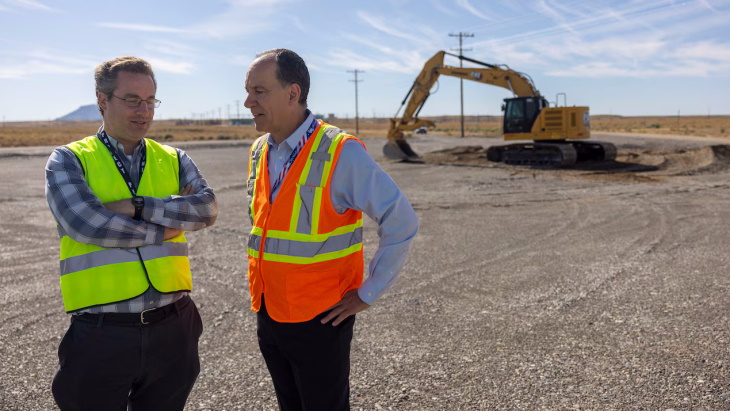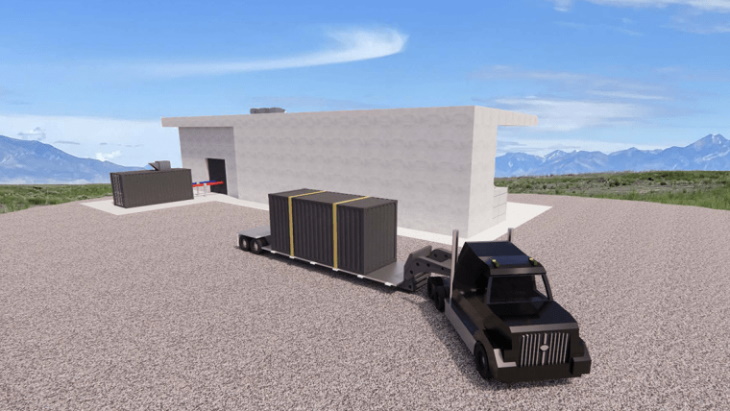The reactor, under a Strategic Capabilities Office (SCO) initiative, is being manufactured by BWXT Advanced Technologies LLC. Assembly of the final reactor is set to begin in February next year. The current schedule includes transport of the fully-assembled reactor to Idaho National Laboratory (INL) in 2026.
The prototype reactor facility is designed to be transported within four 20-foot shipping containers, and tested at INL's Critical Infrastructure Test Range Complex. The Project Pele team will construct a concrete shield structure at the test site next year in order to be ready for reactor placement in 2026.
Upon arriving at INL, the reactor will be transported by truck to the test site and positioned within the concrete shield structure. Piping and electrical wiring will connect the reactor to INL's specialised electric microgrid. Once the reactor's final safety review is completed, the Pele project team will then proceed with the initial test and evaluation plan. The reactor is expected to deliver 1-5 MWe for a minimum of three years of full power operation.

Project Pele Programme Manager Jeff Waksman, left, and John Wagner, director of INL, as they observed ground-breaking for Project Pele on 19 August (Image: DOE)
"We are thrilled to move beyond the era of PowerPoint advanced reactors," said Project Pele Programme Manager Jeff Waksman. "Our tight partnership with INL and the Department of Energy (DOE) Idaho Operations Office is leading the way forward not just for manufacturing advanced reactors, but also for regulating them in an efficient and safe manner."
"The Department of Defense (DoD) has a long record of driving American innovation on strategic and critical technology," said SCO Director Jay Dryer. "Project Pele is a key initiative for improving DoD energy resilience and will also play a crucial role in advancing nuclear power technology for civilian applications."
Project Pele was launched in 2019 with the objective to design, build, and demonstrate a prototype mobile nuclear reactor within five years. The initiative is led by the DoD's Strategic Capabilities Office (SCO), which is working in collaboration with the US Department of Energy, the Nuclear Regulatory Commission (NRC) and the US Army Corps of Engineers, as well as with industry partners.
BWXT Advanced Technologies and X-energy LLC were subsequently selected to develop a final design for a prototype mobile high-temperature gas reactor using high-assay low-enriched uranium (HALEU) tristructural isotropic (TRISO) fuel under the Project Pele initiative. BWXT was contracted in June 2022 to build a prototype microreactor. The contractor team also includes critical roles played by Northrop Grumman, Rolls Royce Liberty Works, and Torch Technologies. The fuel for the reactor will be produced at BWXT's facilities using material from the DOE's highly-enriched uranium inventory.
The reactor is to be a single prototype, which will be demonstrated only within the USA under DOE oversight. DoD will decide whether or not to transition the technology and to use it operationally at a future date, but the reactor could also serve as a "pathfinder" for commercial adoption of such technologies, DoD said.
In a separate project, the US Air Force in 2021 announced plans to build its first microreactor would be at Eielson air force base in Fairbanks, Alaska, to be operational in 2027.





_47120.jpg)

_23621.jpg)






